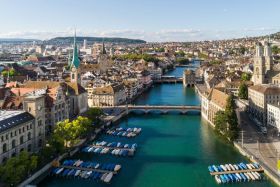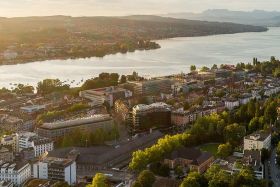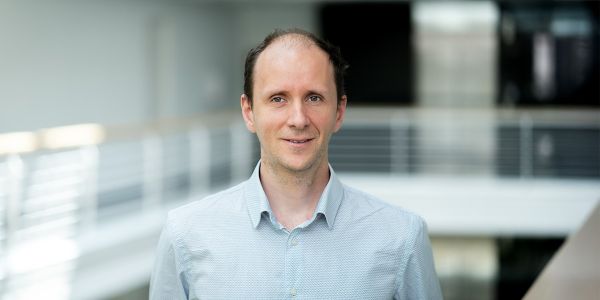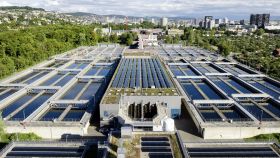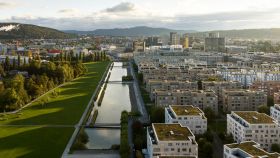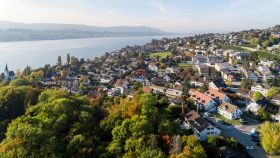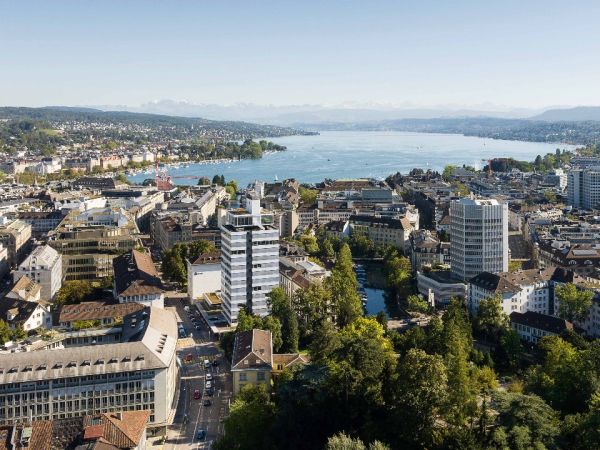
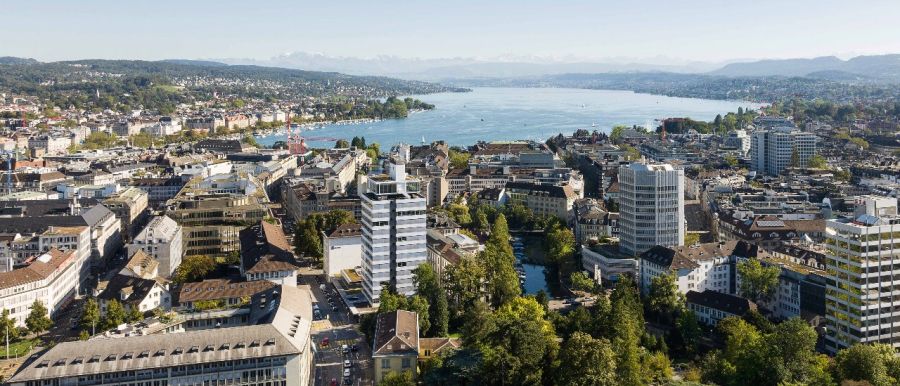
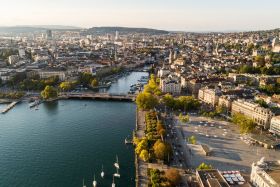
The Zurich lake basin offers ideal conditions for lake heat networks. As many properties with heating and cooling requirements are located in a small space, only short lines are required to connect the neighbourhoods near the lake. Since 2003, we have put the Escherwiese, Fraumünster and Falkenstrasse networks into operation around the Zurich lake basin. The Seefeld heating network is under construction, and with the CoolCity and Enge networks, other major projects are in the works. In this way, we supply heating and cooling to many buildings around the Zurich lake basin sustainably and cost-effectively. These include the Zurich Stadthaus, Convention Center, Park Hyatt hotel, NZZ buildings and various office and residential buildings. The connected properties are interconnected in energy networks, which are designed in such a way that additional properties can be connected and sub-areas developed.
The use of lake water is ecologically sound and sustainable for a variety of reasons. The energy is produced locally and consumed in the area within the energy network. Long transport routes for fossil primary energy sources such as oil or gas are rendered unnecessary. If a heating network using lake or river water replaces a fossil heating system, carbon emissions can be reduced by an average of roughly 90 per cent. No water is taken from the body of water; only heat of up to about 3 kelvin is extracted or added. The thermal energy stored in the lake – including low temperatures of around 5 degrees in winter – is harnessed by efficient heat pumps. In relation to the volume of the lake as a whole, the heat extraction is so minimal that it has hardly any effect.
Eawag, the Swiss federal institute for water research, has investigated the effects of lake water installations on the ecosystem. The experts conclude that in general, a slight cooling of a body of water caused by heating in winter does not adversely affect ecosystems. Even if the water temperature dropped slightly, it would be ecologically sound and would even counteract global warming.
Connected properties are supplied with heating and cooling via lines from the central system or have their own heating system. The lake water is collected with a sieve and transported to the central lake water system using pumps. In winter, we use a heat exchanger to extract heat from the water circulating in a primary circuit. This heat serves as an energy source for the heat pump. This raises the carrier medium to the required temperature level (approximately 40 to 65°C). Distribution in the buildings takes place via a secondary circuit. In summer, the system works in reverse: with free cooling, the lake water can be used directly for room cooling instead of electricity-powered air-conditioning. At the end, the lake water removed is returned to the lake without any chemical changes around 150 metres from the shore and the cycle begins again.
In order to meet Switzerland’s climate targets and reduce CO₂ emissions, fossil fuels will have to be replaced by renewable ones in future. Swiss waters hold a lot of unused thermal energy that can be used to cool or heat buildings near lakes or rivers. This energy can make a significant contribution to covering energy consumption in Switzerland – without damaging the environment. Until now, thermal energy from lakes and rivers has not been used much, even though the proximity of many Swiss towns and cities to water makes it suitable for heating and cooling, the technology is well known and CO₂ emissions can be significantly reduced.
Thermal energy for neighbourhoods and industrial areas
A study carried out by the water research institute Eawag and supported by the Federal Office for the Environment (FOEN) shows that the potential of Switzerland’s main lakes and rivers is ‘remarkably high, often far above regional demand’. This thermal energy is particularly suitable for larger neighbourhoods, large companies and industrial areas. According to estimates by Eawag, the potential for heat extraction in the 25 largest Swiss lakes is 97 TWh and that of the five largest Swiss rivers is 24 TWh.
Rivers and lakes as sources of thermal energy
Lake Zurich will also be used more intensively as an energy source in the future. A study by Eawag estimates that the cooling potential is around 800 GWh per summer season. According to the Eawag report ‘Potential for thermal energy utilisation from Lake Zurich’, the maximum thermal energy usage for heat extraction for heating purposes is 1,900 GWh per season – much more than currently planned. So Switzerland’s lakes and rivers could become a significant source of thermal energy in the near future.
